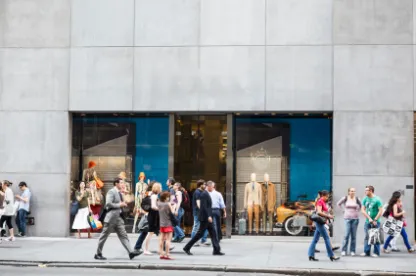As companies begin to reopen from the COVID-19 shutdown, workplace safety is at the forefront of everyone’s mind. While risks can never be completely eliminated, the good news is that there are a number of steps companies can implement now to greatly improve environmental health and safety in their workplaces.
On May 6, Womble Bond Dickinson attorneys Brad De Vore and Mark Henriques joined TRC Companies’ Brett Cox and Brian Godfrey for a webinar discussion on what business leaders need to know about environmental safety – and how they can best maintain a safe work environment in the COVID-19 era.
The Basics of Workplace Environmental Safety
Godfrey, ECR Practice Safety Lead for TRC, said there are three categories of basic COVID-19 prevention steps:
-
Maintaining a clean work environment;
-
Using masks or face coverings; and
-
Practicing social distancing.
While all three steps generally can be employed quickly, allowing companies to get back to work, they require both planning and understanding of best practices.
Godfrey explained that the novel coronavirus is a bi-layer, or envelope, virus, meaning its DNA or RNA is surrounded by a lipid layer. “That’s important very important because it creates a weak spot for the virus,” he said. The lipid layer can be disrupted by soap and water—which is why health officials have stressed handwashing since the outbreak began.
“Cleanliness is extremely important with this virus,” Godfrey said. “Using regular soap and water can do a lot of good.” He said the most effective approach is to clean an area with soap and water first, then add a disinfectant. If a company uses an outside cleaning contractor, evaluate their procedure and make sure they are cleaning products appropriately per the manufacturer’s specifications.
Likewise, he said masks are an important part of workplace defense against aerosolized transmission, which he said is the greatest area of concern. Cloth or surgical masks primarily prevent the wearer from transmitting germs to others, while N95 masks protect the wearer as well. Face shields provide some protection, but generally aren’t as effective as masks, Godfrey said. The type of face protection required depends on such factors as the type of work being done and how much space is between workers.
“If it is essential for employees to wear a mask, the employer should provide them,” Henriques said.
Social distancing is the third key consideration in establishing a safer workspace. Companies should figure out where people are clustered, then figure out ways to separate those clusters, reduce foot traffic and keep employees and customers at least six feet apart.
“Plastic barriers are an important aspect in many work environments,” Cox, Office Practice Leader/Senor Client Service Manager for TRC, said. He also recommends examining ways to increase air flow in indoor settings to bring in fresh air.
Planning is Paramount
De Vore regularly counsels companies on environmental-related litigation and legal compliance. He said the approach to reopening from the legal department perspective can be summarized in three words: “Plan. Execute. Document.”
First, companies should become aware of, and have a plan to address, all relevant safety and reporting guidelines from OSHA, the CDD, and state and local health authorities. “Organize around those in all aspects of what you are going to do,” De Vore said.
Such planning shouldn’t be limited to a single department. De Vore said organizations may want to look at creating a COVID-19 task force that includes representatives from multiple departments, including HR, legal, environmental services, operations and more.
He also said that simply having protocols in place is only part the equation. Companies also need to enforce these practices—and do so consistently—in order to both help protect workplace safety and limit the company’s exposure to liability.
Finally, business leaders and in-house counsel need to make sure that careful documentation is part of their process from the outset.
“You’re going to need to document decision-making,” De Vore said. If an employee does become infected (whether in the workplace or not), “that documentation is your best defense moving forward.”
Henriques said that companies already are facing litigation related to COVID-19 exposure, and such claims are likely to increase now that more and more companies are reopening.
“The US Chamber of Commerce is tracking 300 cases of alleged COVID-19 exposure,” Henriques said. “This is not a hypothetical risk.” He added that while many Congressional leaders want to carve out a liability exemption or safe harbor for companies that reopen during the pandemic, such protections have not yet been enacted.
De Vore said liability should be addressed in contractual agreements. “For example, if you use an outside cleaning contractor, consider the distribution of liability,” he said. “What will be the standard of care?”
Industry-Specific Recommendations
No two industries – and no two workplaces – are alike. Panelists said every operation needs to consider solutions that best meet its specific needs. But there are some general guidelines for particular industries to consider.
For example, Godfrey noted that manufacturing operations often are fast-moving, with employees working in close proximity. So he said companies need to consider “high touch points” where the risk of spreading germs is the greatest.
Also, personal protection equipment (PPE) may be more important in an industrial setting than, say, in an office.
“Consider PPE as a way not only to protect your employees, but also your end consumer,” Godfrey said.
For schools, social distancing may not always be possible. So, the focus should be on cleaning and sanitizing more frequently. Also, schools should stagger the times in which people move in and out of classrooms to limit the number of people in the hallways. School leaders also should consider reducing the number of class changes for similar reasons.
The team also suggested being very considerate about not sending students with any symptoms to school and in university housing settings offering training to residential assistant type staff who may have to deal with COVID-19 related situations.
Employees and company owners alike are both excited and apprehensive about the prospects of reopening operations. By following some basic environmental safety guidelines, both management and employees can help protect their workspaces for the safety of worker and customer alike.





 />i
/>i
